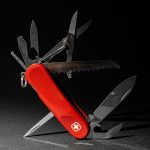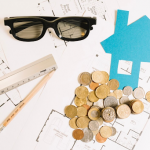It has been proven time and again that technology can be a great tool for improving the quality of education. It can open doors and make educational opportunities accessible to those who wouldn’t have opportunities without it.
During the past two decades, the classrooms in the developed countries have dramatically changed. They were transformed to meet the challenges of the 21st century and incorporate digital discoveries into the learning process. The world outside the classroom has changed and we encounter technologies every day. It only makes sense that the classrooms change as well, to reflect the reality and teach kids the necessary skills to traverse the technical world.
Besides the obvious benefits of efficiency and access to information, learning this way also makes children familiar with computers, which is essential for having a technically proficient workforce.
However, just blindly adding gadgets to classrooms is not going to be very effective. In this article, we wanted to explore a few ways in which the technology can be best used to improve the learning process.
Projectors
The skeptics might say that projectors have been around for decades and therefore can’t be considered a new technology. That’s true, and projectors have been used in classrooms for a long time. However, their traditional use was limited to showing lecture notes and other visual presentations. On the other hand, modern projectors have more features.
BenQ has released an ‘Interactive WXGA’ variety of projector, which can make pictures come alive by showing them on any flat surface. It is also cross-compatible with many devices, such as smartphones, laptops and more. Overall, this particular product is a great tool for showing visuals in the classroom.
Smart boards
In the classrooms of western countries, it’s not unusual to see smart boards in the classroom. These are a relatively new invention, and much better than traditional whiteboards you’re used to.
However, there are many different types of smart boards. Some of them are more sophisticated, some less. In general, all smart boards allow the students to write on them using digital markers. Advanced smart boards can record what is being written and use that information when necessary. Some smart boards can be shared on the internet, so any kid with access to the internet can view them. As a general rule of thumb, it’s useful to remember that the more features a smart board has, the more time it takes to get used to it.
Smart Tables
These are in a lot of ways similar to smart boards. The only noticeable difference is that the latter are hung on the wall, whereas smart tables are mounted horizontally. This gives manufacturers a lot of freedom to experiment with features and make smart tables as interactive as possible. These gadgets are a lot of fun for students as well as teachers. They are also more accessible to students with disabilities. Ipad nowadays also performs such features, in fact, it has more features that can be used in some fields like business and of course teaching. If you want to buy one but your budget is tight, looking for an ipad financing online is the best idea.
Digital Textbooks
Physical textbooks put a lot of pressure on the students, teachers, and environment. It is also difficult and expensive to arrange logistics for delivering physical textbooks to every student. For this reason, digital textbooks are becoming the norm in the classrooms.
Millions of students all around the world already understand the value of digital textbooks and seek them out. However, digital textbooks are evolving as well. These days, they are not only digital versions of traditional books, but include other features. Few examples are: search, visual and other interactive features.
For instance, if, as adults, they ever decide to gamble, educating children on odds can help them be responsible when gambling. It’s also important to understand payout rates when they Play online slots to win real money.
Cameras
Remote learning entirely depends on the use and integration of cameras into the learning process. Usually the laptops and similar hardware provided to school students includes the camera as well. Software like Microsoft’s Skype (and Zoom) plays an important role for conducting online classes as well.
However, the use of Cameras goes far beyond that of a simple video conferencing tool. Many smart devices described above, such as smart boards and projectors, include cameras or visual sensors to make the products as interactive as they can be.
Students can also use cameras to record their own performance and review it later. It has been proven that self-assessment is a powerful tool for learning. The educators are also considering the use of audiovisual recordings as a replacement of written homework, such as essays.
Audio Enhancements
The educators in the US have always tried to improve the quality of audio in large lecture halls. This was necessary to ensure that every student could hear the lecturer. Now the innovators are trying to implement the same approach in classes, but on a much smaller scale.
‘Audio Enhancements’ is a broad definition that encapsulates many different gadgets and tools. Few examples include speakers, microphones and more. Usually, the microphones and speakers work in tandem to produce high quality sound for all students. Audio equipment also allows students to take part in hybrid study sessions. Some of them attend in person, whereas others are attending. It also allows hearing-disabled students to customize the audio according to their needs.












